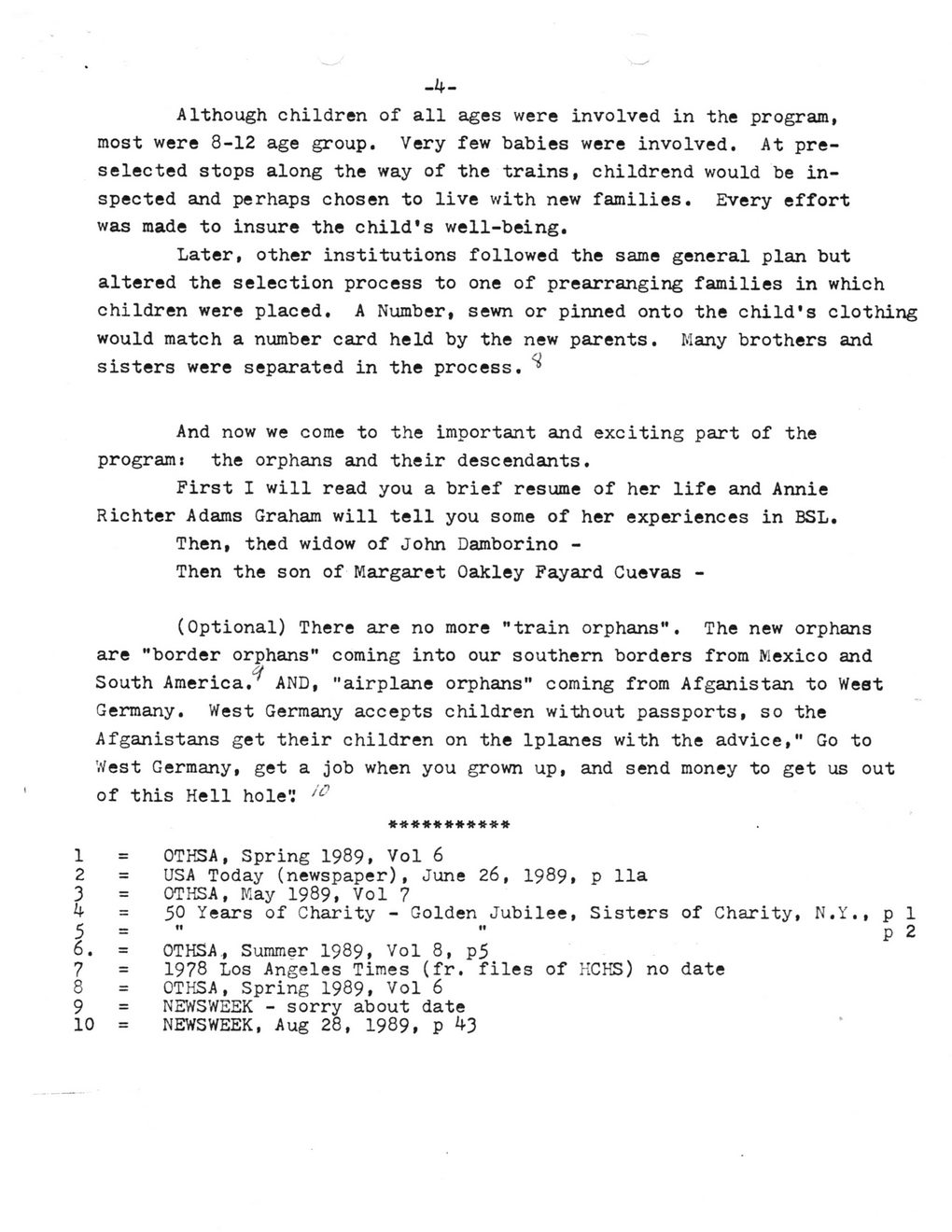This text was obtained via automated optical character recognition.
It has not been edited and may therefore contain several errors.
VO OO-'O crw^rx ro H-* -4- Although children of all ages were involved in the program, most were 8-12 age group. Very few babies were involved. At preselected stops along the way of the trains, childrend would be inspected and perhaps chosen to live with new families. Every effort was made to insure the child's well-being. Later, other institutions followed the same general plan but altered the selection process to one of prearranging families in which children were placed. A Number, sewn or pinned onto the child’s clothing would match a number card held by the new parents. Many brothers and sisters were separated in the process. ^ And now we come to the important and exciting part of the program: the orphans and their descendants. First I will read you a brief resume of her life and Annie Richter Adams Graham will tell you some of her experiences in BSL. Then, thed widow of John Damborino - Then the son of Margaret Oakley Fayard Cuevas - (Optional) There are no more "train orphans". The new orphans are "border orphans" coming into our southern borders from Mexico and South America. AND, "airplane orphans" coming from Afganistan to West Germany. West Germany accepts children without passports, so the Afganistans get their children on the lplanes with the advice," Go to West Germany, get a job when you grown up, and send money to get us out of this Hell hole'.' /d? *•**■******•** OTHSA, Spring 1989, Vol 6 = USA Today (newspaper), June 26, 1989, p 11a OTHSA, May 1989, Vol 7 = 50 Years of Charity - Golden Jubilee, Sisters of Charity, N.Y., p 1 = " p 2 = OTHSA, Summer 1989, Vol 8, p5 = 1978 Los Angeles Times (fr. files of KCHS) no date OTHSA, Spring 1989, Vol 6 = NEWSWEEK - sorry about date 10 = NEWSWEEK, Aug 28, 1989, P *0

Orphan Train Riders of BSL Document (163)